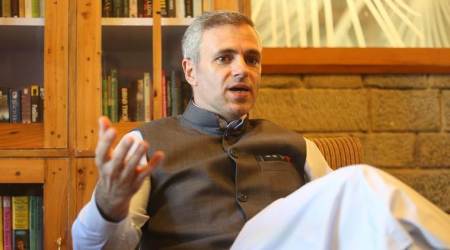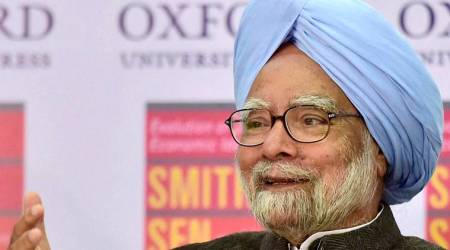 Article 35A derives its strength from the State Subject Laws of 1927.
Article 35A derives its strength from the State Subject Laws of 1927.
Jammu is at a crossroads of history. The land known for the heroic sagas scripted by Mian Dido, Raja Ranpat, Bawa Jitoo, Jambu Lochan and other valiant heroes, is struggling to retain its glorious ethos and identity. A place that had been a shining example of cultural assimilation and co-existence finds itself pushed to the wall: Its cultural identity and very existence is at peril now.
Why does the state of Jammu and Kashmir in general, and Jammu in particular, feel compelled to fight for the rights bestowed by the Indian Constitution, 70 years after Independence? Why should Jammu worry about preserving its race, language, history, legends and tradition in the multi-religious, multi-lingual and multi-racial canvas of India? What has gone wrong that the peaceful, compassionate and tolerant Dogras, ingrained with secular ethos, feel challenged by the overt and covert attempts to remove Article 35A of the Constitution?
Article 35A of the Constitution is more relevant for the Duggar region of Jammu than Kashmir and Ladakh for a variety of reasons. There is a strong apprehension that its repeal will lead to the economic deprivation and erosion of cultural identity of the Dogras. In fact, this was the motivation for the last Dogra ruler of Jammu and Kashmir, Maharaja Hari Singh, to bring laws in 1927. On the plea of the Dogra Pratinidhi Sabha and Kashmiri Pandit Sabha, the Maharaja sanctioned laws to safeguard the interests of his subjects, especially the Dogras of Jammu, and to shield them from domination by elite and affluent non-state subjects, mostly from neighbouring Punjab. The enactment of the State Subject Laws had not been sought either by the people of Kashmir or Ladakh, but by the Dogras of Jammu, who had legitimate apprehensions that wealthy businessmen from Punjab will take over Jammu’s economy and dominate social life in ways that the region will cease to be a Dogra homeland. The laws have withstood the test of time for the past 90 years and hugely helped in preserving the identity and interests of the Dogras.
Article 35A derives its strength from the State Subject Laws of 1927. Being a legacy of the Maharaja, it is sacrosanct for us. Tampering with it will, therefore, mean not only destroying the Duggar ethos and pride but also subjugating Dogras to outside economic dominance. There is an urgent need to resist these sinister machinations. Those at the forefront of wanting to trample the unique identity of the Duggar land are spreading the canard that repealing Article 35A will give a boost to development in Jammu and Kashmir, particularly Jammu. They deliberately ignore economic data, which indicates that the geographical location of the state, a limited market, manufacturing costs and the volatile law and order situation are the real impediments to the growth of industry in the region. It is not that industrialisation hasn’t taken place. Industry does exist in Jammu, Samba and Kathua, though the region could never emerge as an industrial hub. It is also factually incorrect that industrialists from across the country cannot set up businesses in J&K; they can lease land (for 99 years) in the state. Why should the scrapping of 35A, therefore, be wrongly linked to the lack of industrial growth in Jammu and Kashmir?
A false narrative has been created that removing Article 35A will lead to the integration of Jammu and Kashmir with the rest of India. This is irrational and far-fetched. We are a part of India and our relationship with the nation was inked on October 26, 1947 through the Instrument of Accession signed by Maharaja Hari Singh, then ruler of Jammu and Kashmir, and Lord Mountbatten, the Viceroy of India. The contours of this agreement were incorporated into the Indian Constitution as Article 370. Article 35A was brought in through a presidential order by virtue of the powers vested in the president, as enshrined in the Constitution under Article 370. This was done to safeguard the rights and guarantee the distinct identity of the people of Jammu and Kashmir. Scrapping Article 35A, hence, will shake the very foundation of this relationship.
Some people claim that Jammu has been discriminated against in the past and the removal of Article 35A will lead to its political empowerment. Indeed, each region of the state — Jammu, Kashmir and Ladakh — must get its due share and no region should encroach upon the share of the other regions. But it is important to understand that the repeal of this proviso will not address anomalies, if any, against Jammu.
On the contrary, removing Article 35A could lead to a squeeze in opportunities for the Dogra youth. They will have to compete with youth from other states for jobs. Professional academic courses will become more competitive and difficult. The local youth will be deprived of the concessions in recruitment in the security forces and denied scholarships and other financial assistance. The marginal and medium-level traders will face increased competition. The influx of “non-subjects”, in the absence of the repeal of Article 35A, will put immense pressure on landholdings. Farm activity will reduce and farmers will be rendered jobless. Work opportunities for the local skilled and unskilled labour will shrink. Besides, the large migrant labour is likely to acquire land and build houses if residency restrictions under Article 35A go. The unique social identity of Dogras, I fear, will be in jeopardy.
The government must carry out a verification of state subjects and identify those who have managed to become permanent residents through dubious means. Once identified, such people should be prosecuted as per the law and deported from the state. The fight to protect Article 35 A is the fight to protect Dogra Dugar land.

